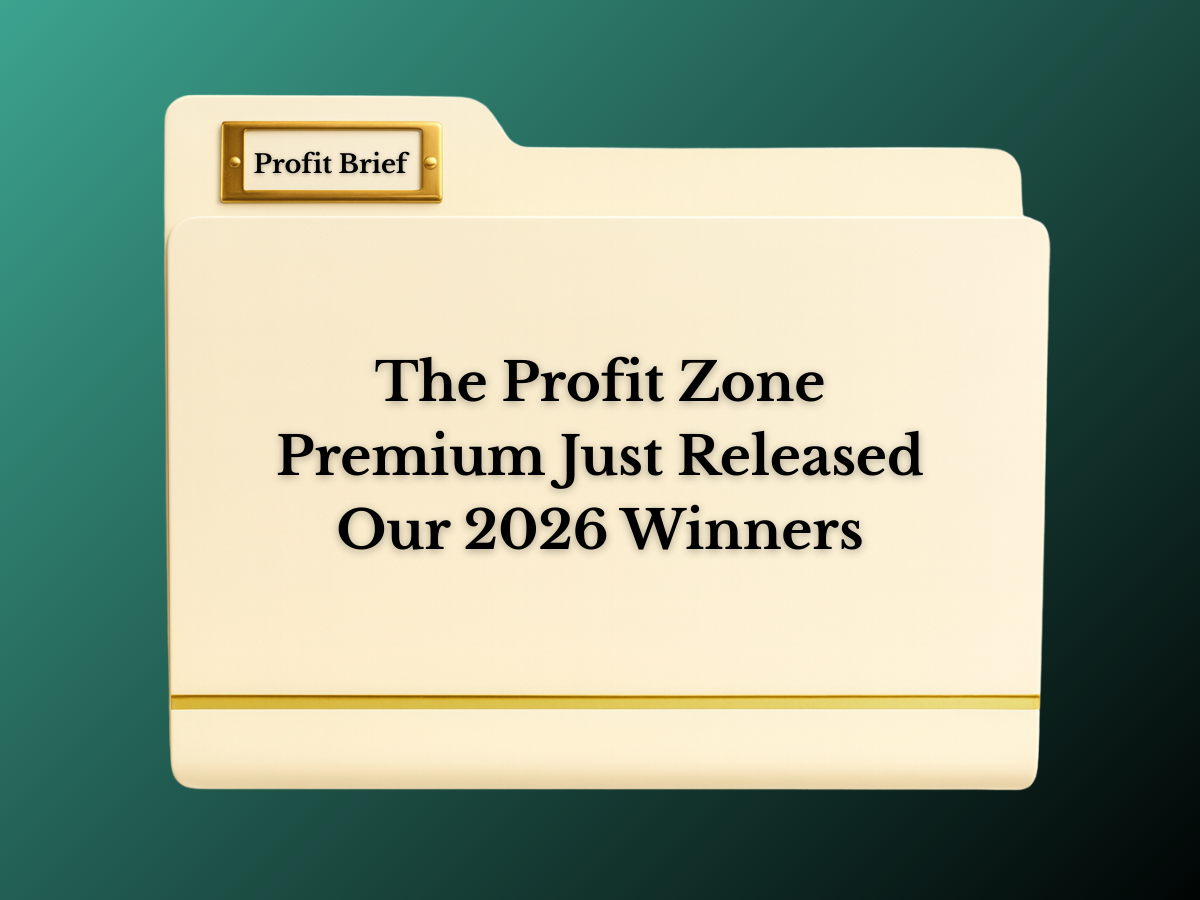Welcome to The Profit Zone 👋
Where 12,700+ millionaires, CEO’s and high-performing entrepreneurs read the #1 financial newsletter on the web.
We’re teaching you what schools forgot in 5 minutes or less.
Happy Monday!
Let’s start the week off strong.
The agenda for today:
👉 Chipotle stock splits
👉 Reddit stock soars on IPO
👉 How I would invest $1,000 if I was just starting today

This tweet does not factor in taxes that may be paid on income that is earned in a taxable account.

“Investing should be more like watching paint dry, or watching grass grow. If you want excitement, take $800 and go to Las Vegas.”

Markets YTD

Chipotle Splits

On Tuesday, Chipotle ($CMG) announced a 50:1 stock split, making it one of the biggest stock splits in New York Stock Exchange history.
The last time we saw a 50:1 stock split was in 2010 from Warren Buffett’s Berkshire Hathaway, which had a market cap of about $169 billion at the time.
Headlines Making Noise: Keeping You Informed and Empowered 📝💡
Grab your pen and paper
If I had $1,000 and was just starting my investing journey today, here’s what I would do…
I remember the day I bought my first stock like it was yesterday.
I was 18 years old with about $1,000 to my name and terrified to lose my money.
I had no idea what I was doing other than bits and pieces of advice from my parents who always talked about how much money they were making in the stock market.
I wanted to be like them, so I opened my investment account the day I turned 18 years old and bought 3 shares of Scotiabank ($BNS) which I still own to this day (and a lot more of it).
At the time, I had no idea what a dividend was, I barely knew what an index fund was and I had no idea what direction I wanted to go in with my money.
All I knew was that I was investing money for my future and that gave me a sense of comfort, especially doing it at 18 years old.
In today’s Profit Zone, I’m going to share with you what I SHOULD HAVE done at the time.
Even if you’re not 18 years old investing your first $1,000, the breakdown you’re about to read can be applied at any point in your investment journey.
Disclaimer before we begin: this allocation is based on personal preference and is not one size fits all. I’m just sharing what has worked for me.
Let’s begin…
If I had $1,000 to invest and I was just starting my investing journey today, here’s what I would do.
1) 50% in dividend stocks
As a “self proclaimed” dividend investor, you should have seen this coming.
But let me explain my reasoning…
Dividend stocks allow you flexibility.
They provide the cash flow you need to either invest in more shares or explore other opportunities in the market.
Of course your cash flow with $500 (50% of $1,000) will be very small, but having that extra cash flow does something to your brain.
Not only is cash king, but being invested in dividend stocks forces you to become a long term investor.
If you don’t hold the shares long term, you won’t get the dividend.
The investing habits dividend investing provides outweighs the cash flow you’ll earn in the beginning.
Habits you can take with you later on in your investing journey.
Good places to start:
Dividend Aristocrats List (25+ years of consecutive dividend growth)
Dividend Kings List (50+ years of consecutive dividend growth)
2) 20% in high upside growth stocks
Lets face it, technology is the backbone of our society.
Although I’m a “dividend investor”, it would be foolish not to be exposed to some of the worlds market leaders in the technology space.
The stocks you decide to buy in this space will be dependent on the level of risk you want to take on.
But for me, I like to stick with market leaders and household names that have been growing at a consistent pace and will continue to grow over the next couple of decades.
The great part about having such a high allocation to dividend stocks is that if you decide not to reinvest your dividend back into the same company, you can use the income to start new positions.
3) 20% in ETFs
I believe every investor should own ETFs.
Whether you agree with this statement is completely dependent on the kind of investor you are.
But hear me out…
ETFs will help you sleep at night.

They provide diversification and exposure to a wide range of companies in different sectors which helps your portfolio balance out market volatility, key for your long-term wealth.
Think about it…
If you buy an S&P 500 ETF like VOO (or VFV for my fellow Canadians) you’re buying into 500 of the largest and most powerful companies in the U.S.
It would take a total market collapse for your investment to go to zero.
The chances of that happening: very unlikely.
ETFs have become the foundation of my portfolio.
And you can’t build an empire on a weak foundation.
They also provide a margin of safety so you can feel more comfortable when you branch off into other individual stocks that may come with a bit more risk.
Which brings me to the final allocation in this $1,000 portfolio…
4) 10% in speculative small cap stocks and/or crypto
Rarely do I ever talk about my speculative investments, but there’s a reason for that.
I don’t endorse venturing off into the unknown until you have a foundation of market leading technology and dividend stocks, as well as a good base of ETFs.
However depending on your age and risk tolerance, there is room to allocate some funds towards assets that could double, triple or even quadruple your investment.
This is a tricky space to be invested in.
And it can be completely disregarded if you feel that you’re too much of an emotional investor.
With that being said, the 10% allocation allows you to be exposed to smaller companies that have a massive runway for growth or the crypto space which is naturally highly volatile.
For myself, if all of my speculative investments go to zero tomorrow, the impact to the total value of my portfolio doesn’t leave me homeless.
Make sure you’re mitigating your risk as much as you can.
Final Notes…
The allocations in this newsletter are meant to provide a guideline.
You can always modify the allocation to fit your own preferences.
Perhaps a 20% allocation to market leading tech isn’t enough and you want to increase that to 30% to have more exposure.
Perhaps you’re more risk averse and you’d like to have a 30% allocation to ETFs to increase the diversification of your portfolio.
Like a diet, an investment strategy that works for one person, may not work for you.
But with that being said, the name of the game is longevity.
And it isn’t about how much money you make, it’s about how much you can keep.
I’ll leave you with this:
Average returns over an above average period of time is a recipe for massive amounts of wealth.
Miss last weeks newsletter? Read it below:
See you in the next one!
Alex (The Dividend Dominator)
Founder and CEO of Dividend Domination Inc.
Follow me on Twitter, Instagram and LinkedIn
Sponsor The Profit Zone
Want to get more eyes on your products?
Advertise to 12,700+ investors hungry for financial content.
Click below to book with us.
Did you enjoy this newsletter?

My Website - a one-stop shop for all things dividend investing.
Financial Domination - learn how to set up an effective budget, figure out your investor profile, use stock screeners and rebalance your portfolio without paying someone to do it for you.
My Full Stock Portfolio - get access to all of my positions and get updates every time I buy or sell.
The Complete Investors Accelerator Pack - everything you need to build a dividend portfolio that grows on itself. Learn more about dividend investing, how to analyze dividend stocks, what to do with your dividends and how to build a stream of passive income through the stock market.
Beehiiv - sign up for Beehiiv and start your own newsletter today.
TweetHunter - let the software do the tweeting for you. The only scheduler you’ll ever need. This tool makes me money in my sleep. Give it a try for free.






